
Marc Chagall. Over the Town (1918)
Tretyakov GalleryDuring his long life - he lived to be 97 - Marc Chagall created many paintings, graphic works and stained glass windows. The artist created a special world in which, as in a kaleidoscope, the tumultuous history of the 20th century was reflected. People and animals fly in the air, as do fiddlers and angels, sometimes amid the backdrop of the sweeping curves of the Eiffel Tower and the flowing lines of houses in his native town of Vitebsk (then Russian Empire, present-day Belarus). Let's look at 10 of the master's works.
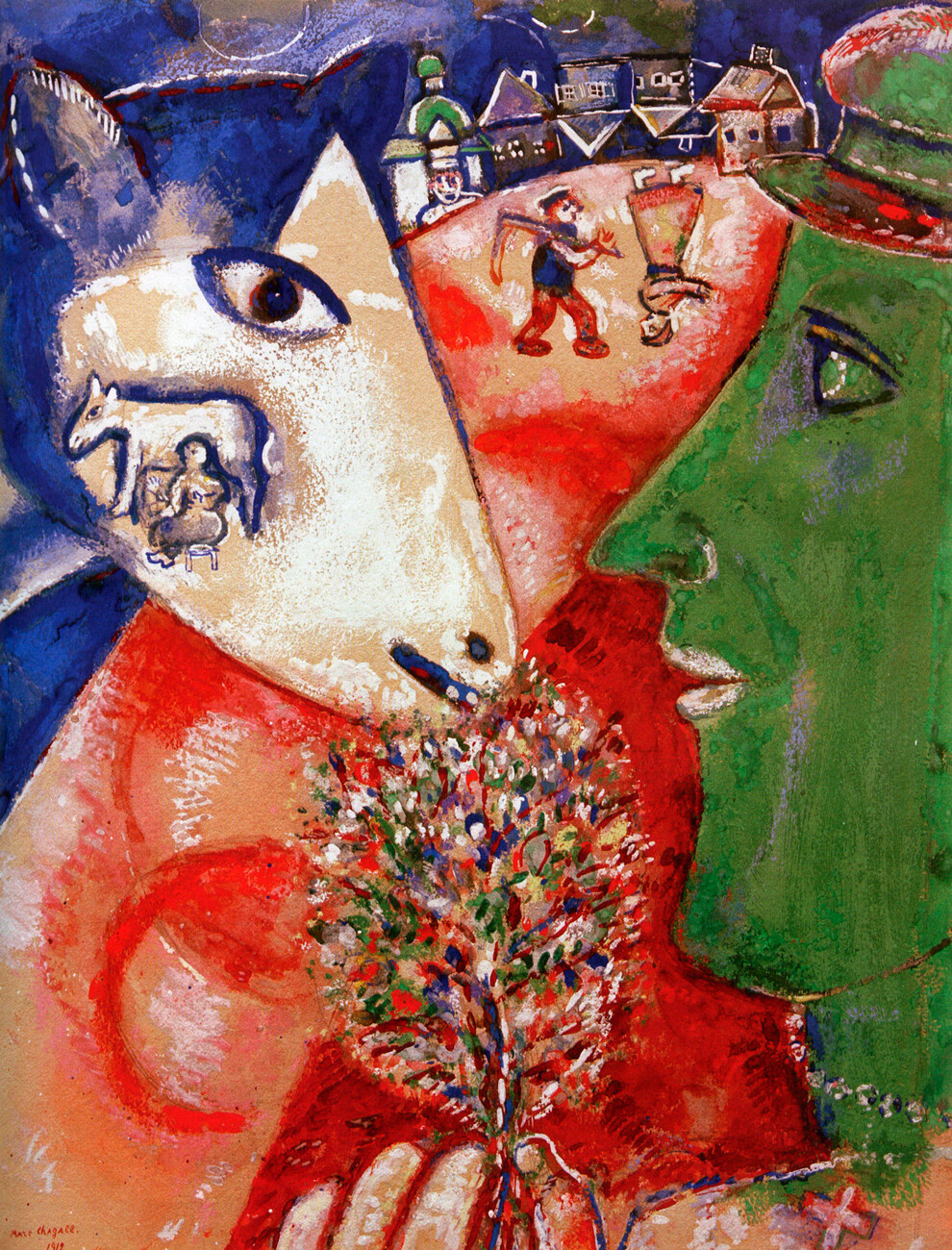
When the 23-year-old Chagall arrived in Paris in 1911 to study he found himself immersed in new experiences. He met fellow artists Sonia Delaunay, André Lhote, Blaise Cendrars and Guillaume Apollinaire. Exhibition halls became his second home in which he closely studied the paintings of the Impressionists, and he tried his hand at the new styles in art at that time, such as Futurism and Cubism. Inspired by the art of the Fauves (French for "the wild beasts"), Chagall painted one of the most poetic declarations of love for the places of his childhood. It is not so much a landscape as an image of a whole universe, reflecting nostalgia for a familiar way of life. He painted himself in green, a color that to him symbolized rebirth and joy. When Léon Bakst, his teacher from St. Petersburg, saw the work, he exclaimed: "Now your colors sing".
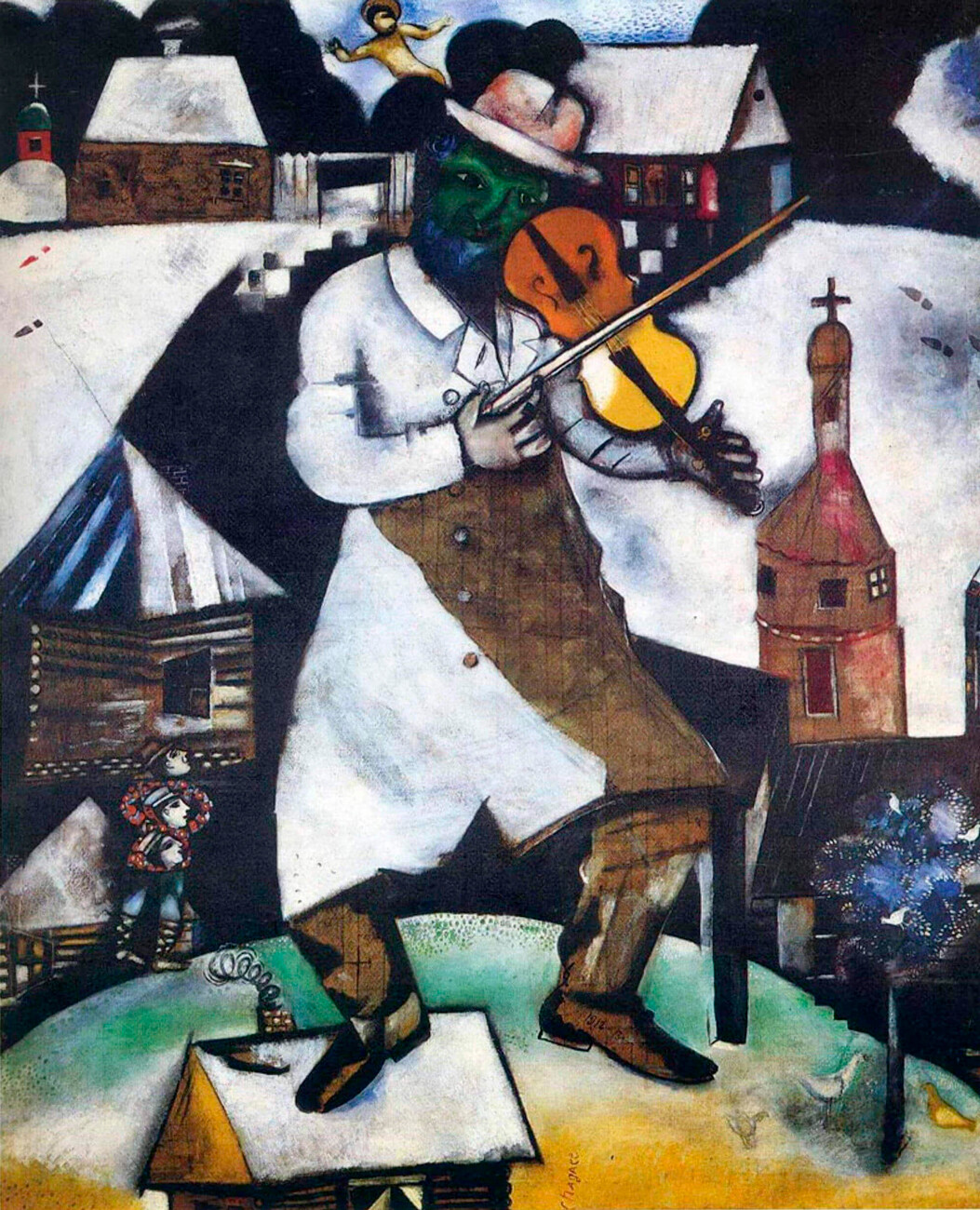
After taking lodgings in the famous La Ruche artists' residence in Paris, Chagall continued extensively to paint his native Vitebsk. Having no money, he would use anything that passed for a canvas. He painted "The Fiddler" on a checkered tablecloth and its pattern is still clearly visible on the musician's clothes and shoes. In Vitebsk, neither weddings nor funerals were complete without a fiddler: One was always present at all important events in life. It is not by chance that the artist placed him on a rooftop: He once confessed that he had an uncle who used to climb onto the roof in order not to be disturbed when he drank his compote.
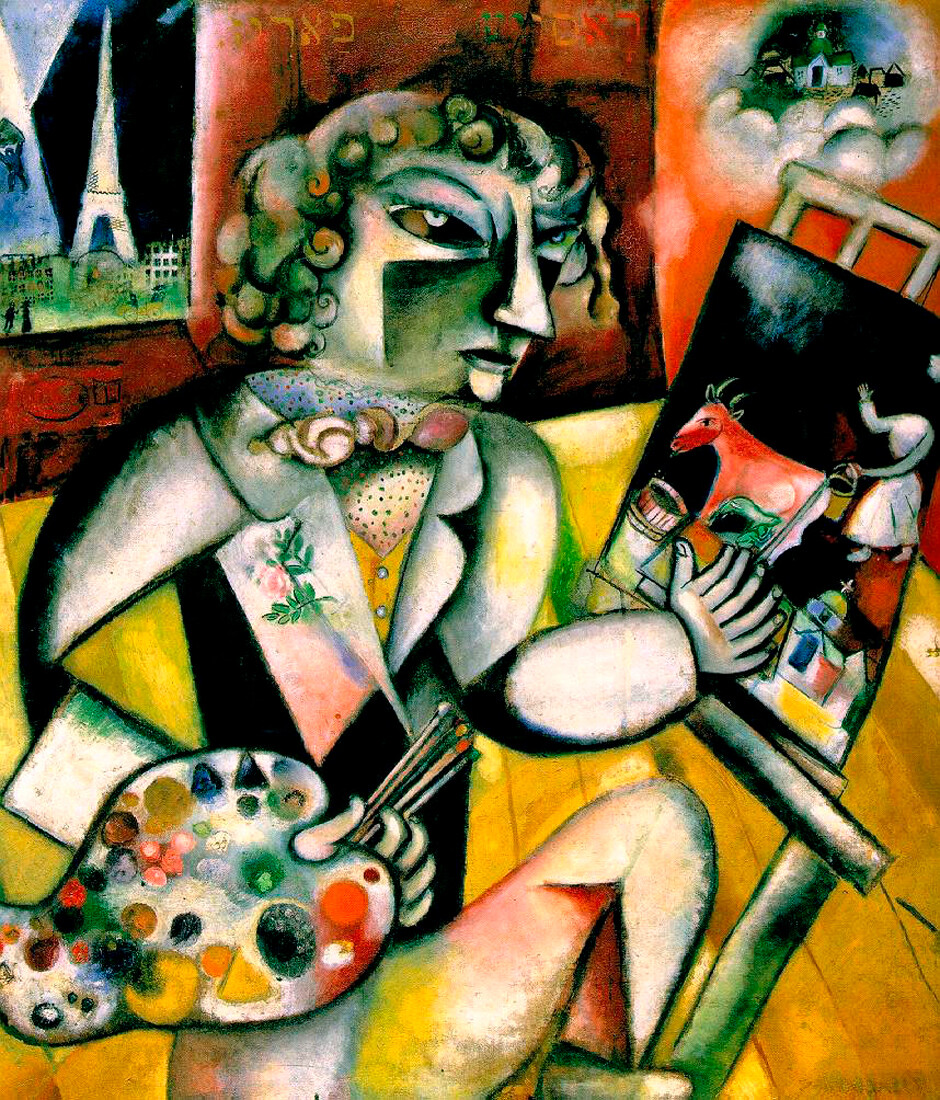
In France, Chagall felt exceptionally uplifted and inspired. "No academy could have given me all I discovered by getting my teeth into the exhibitions, the shop windows, and the museums of Paris," he wrote. In 1912-1914, he exhibited his work at the Salon des Indépendants, including his first French self-portrait. The artist portrayed himself in a fashionable suit working on the painting, "To Russia, Donkeys and Others". It reflects his love for both Paris and Vitebsk, and it is no accident that the Eiffel Tower can be seen behind the artist, while above his easel is a vision of his native Vitebsk, "a town of churches and synagogues". There is also a desire for recognition. Chagall depicts himself with seven fingers on one hand - i.e. as a jack of all trades.
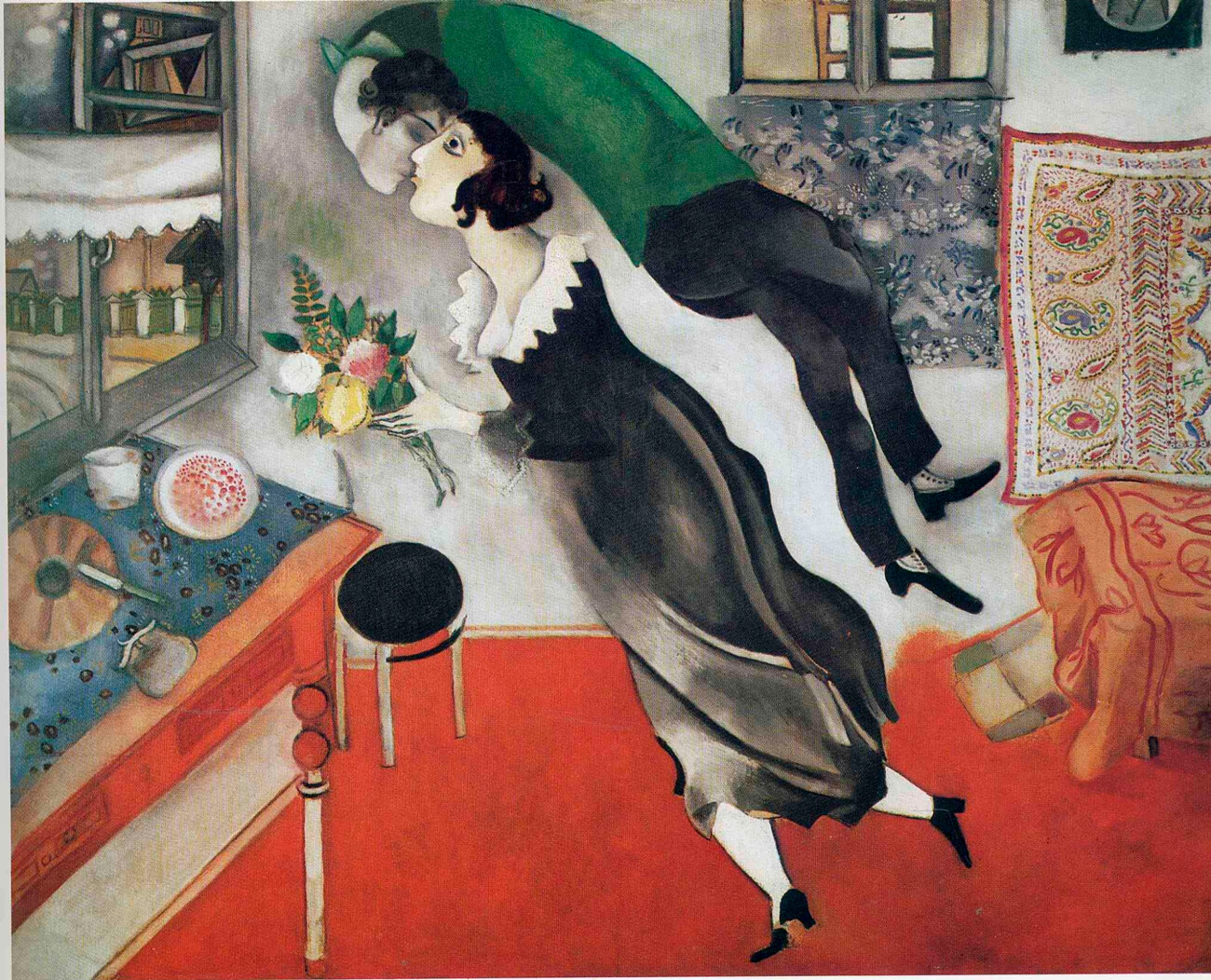
The most fateful personal encounter of Chagall's life also happened in Vitebsk. From 1906-1910 he lived and studied in St. Petersburg. Then one day in 1909, he returned home to Vitebsk, and at a party he met Bella Rosenfeld and instantly fell in love with her. "It’s as if we had known each other for a long, long time and she knows everything about me. And I realized that she would be my wife." When in 1914 he returned from his studies in Paris, he met her again and a year later they were married. After that, his wife and muse featured in his paintings for decades.
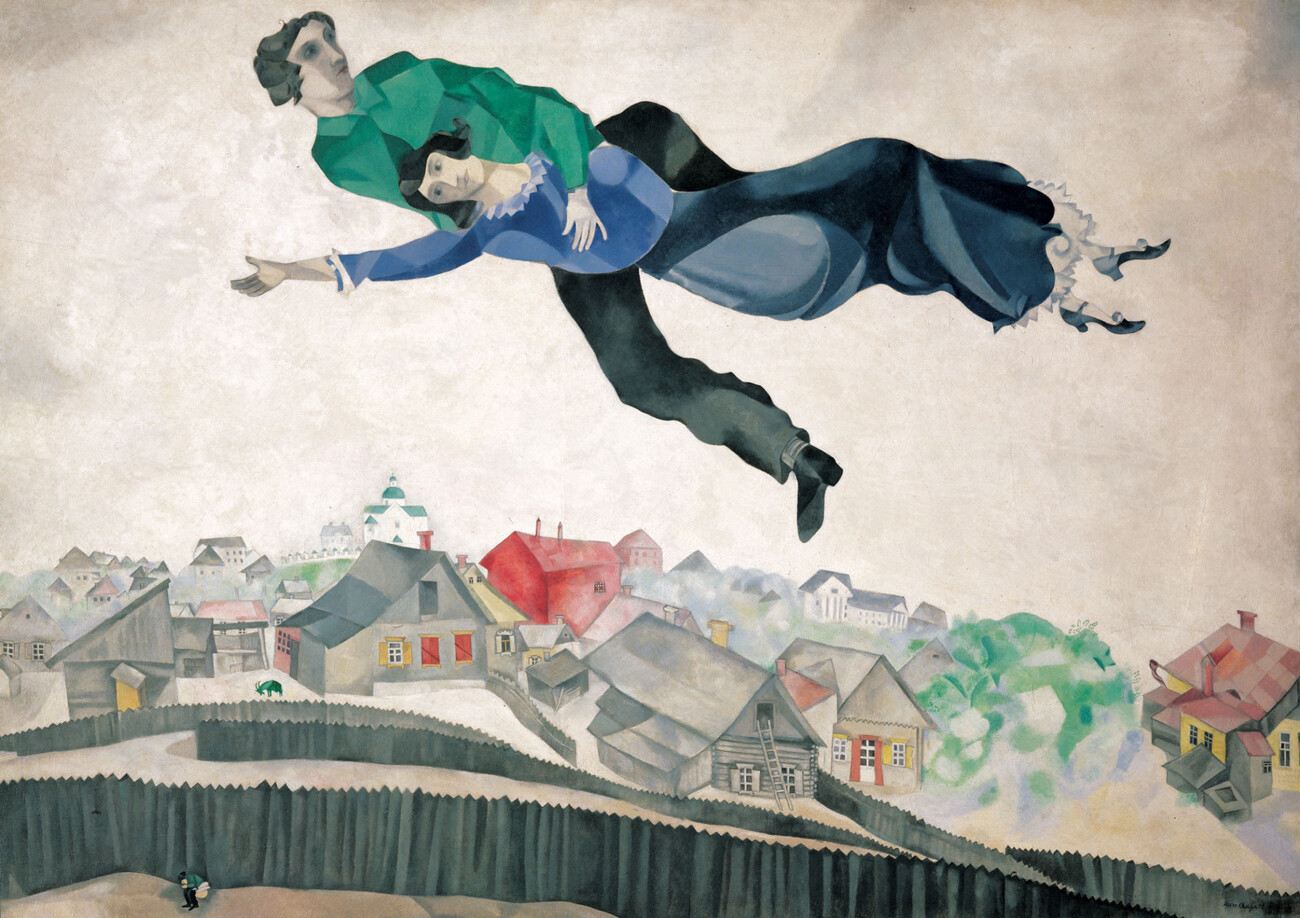
He painted Bella again and again, depicting them together; and with the arrival of their daughter, Ida, portraying all three. The women in Chagall's pictures had recognizable features: a pale face and beautiful black eyes - it was always her, the most important woman in his life. The artist admitted that he would not finish a work without first getting her opinion. She was an intensely powerful and positive influence on his art, and he once said that "She has flown over my pictures for many years, guiding my art." Indeed, he frequently portrayed the two of them flying over a town - their love truly gave them wings. Bella Chagall died in 1944. But for the artist she remained an eternal source of inspiration.
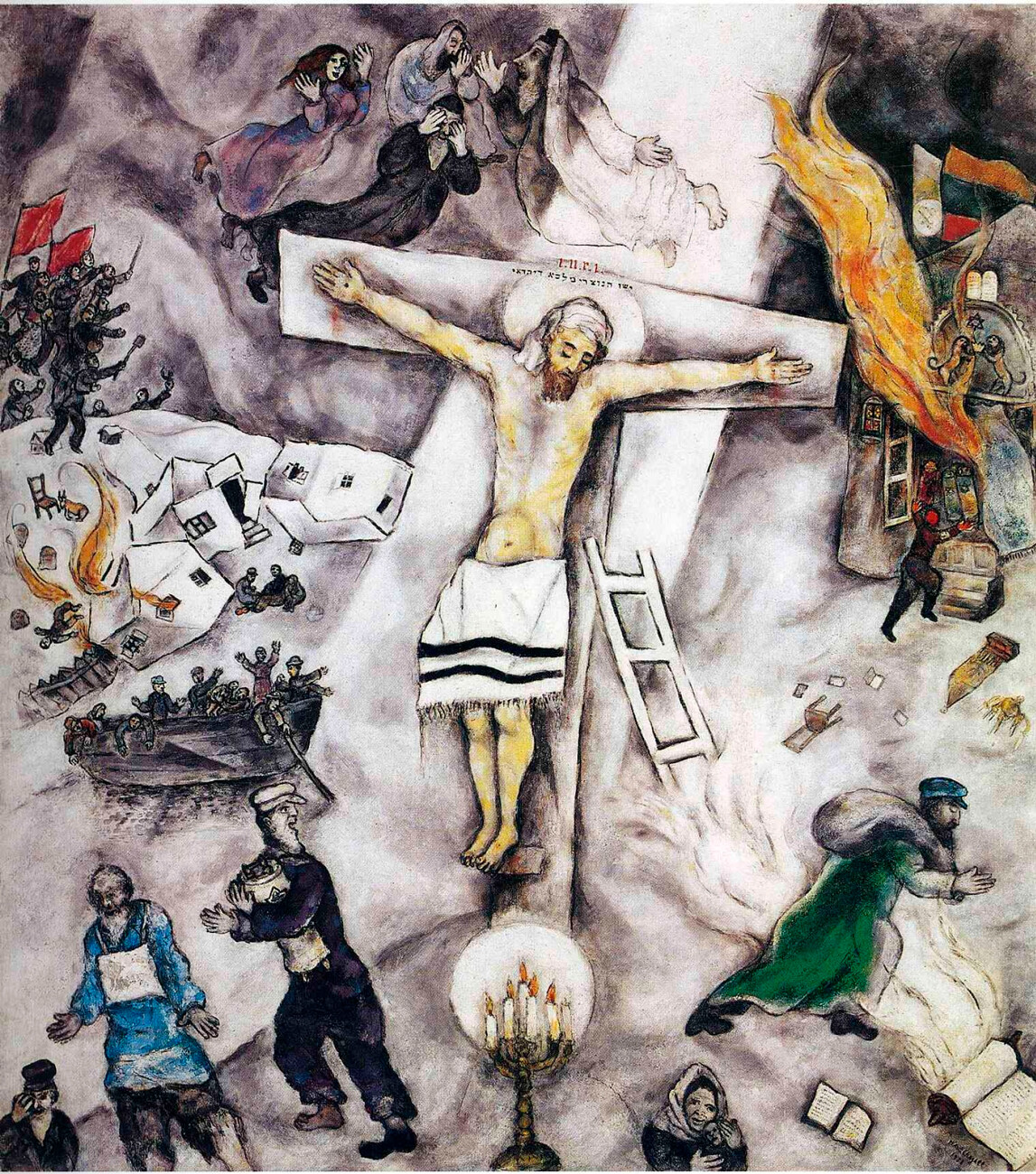
In the 1930s, Chagall's life was marked by several simultaneous upheavals. In Germany, his work was classified as ‘degenerate art’. After several anti-Jewish pogroms in 1938, and appalled by the unfolding tragedy, Chagall painted the canvas "White Crucifixion" that tells of the persecution of the Jewish people. In those years he was already living in Paris with his family, and in the spring of 1941 the Vichy regime stripped him of his French citizenship. But he managed to get to the U.S. with the help of friends.
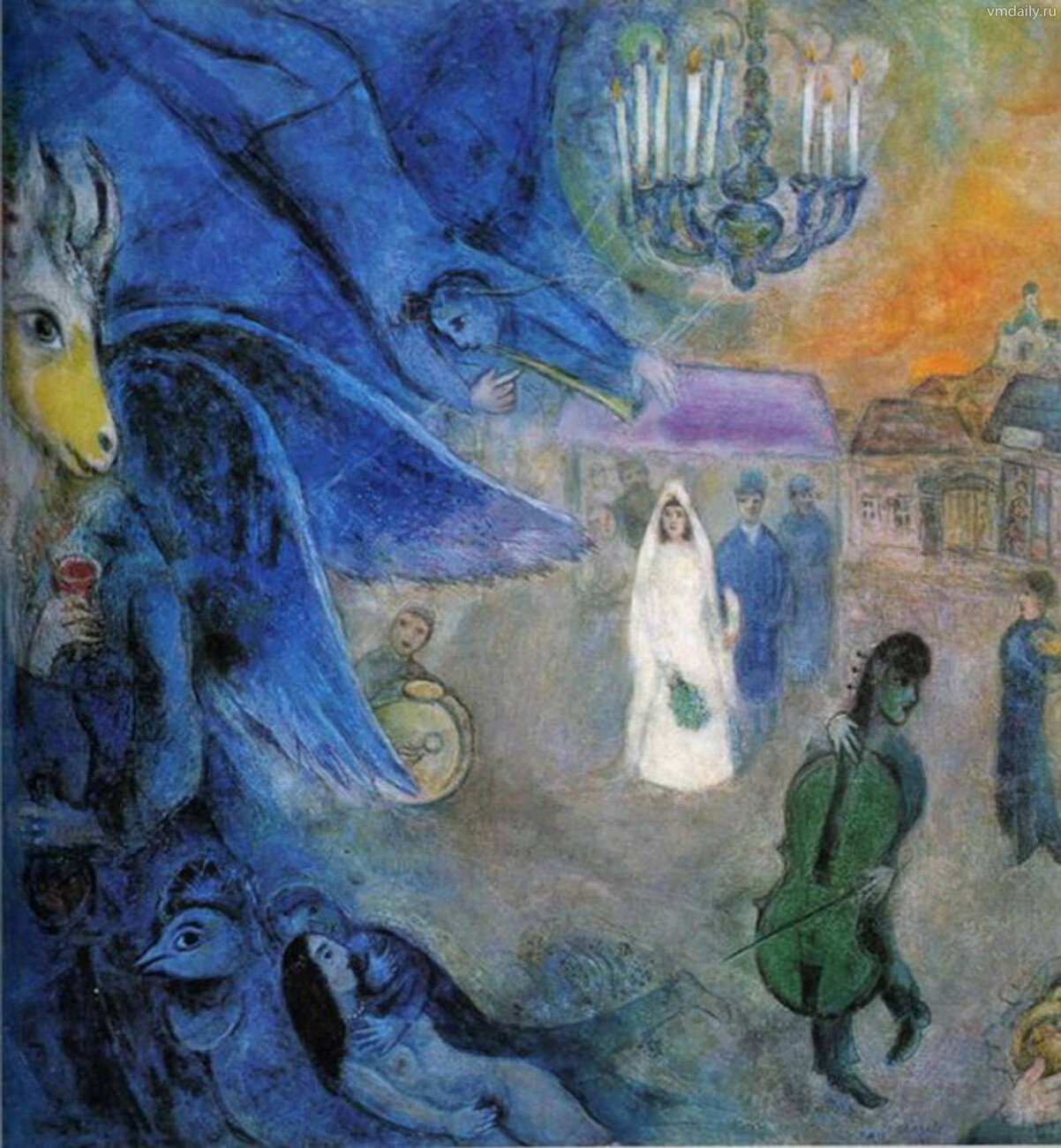
After Bella's death, the artist did not touch his brushes for nine long months. He was overwhelmed with grief. But later painted "The Wedding Candles" in memory of his beloved Bella, depicting one of the happiest moments in his life. Chagall immortalized Bella's memory, publishing books of her memoirs, which were translated into French by their daughter Ida.
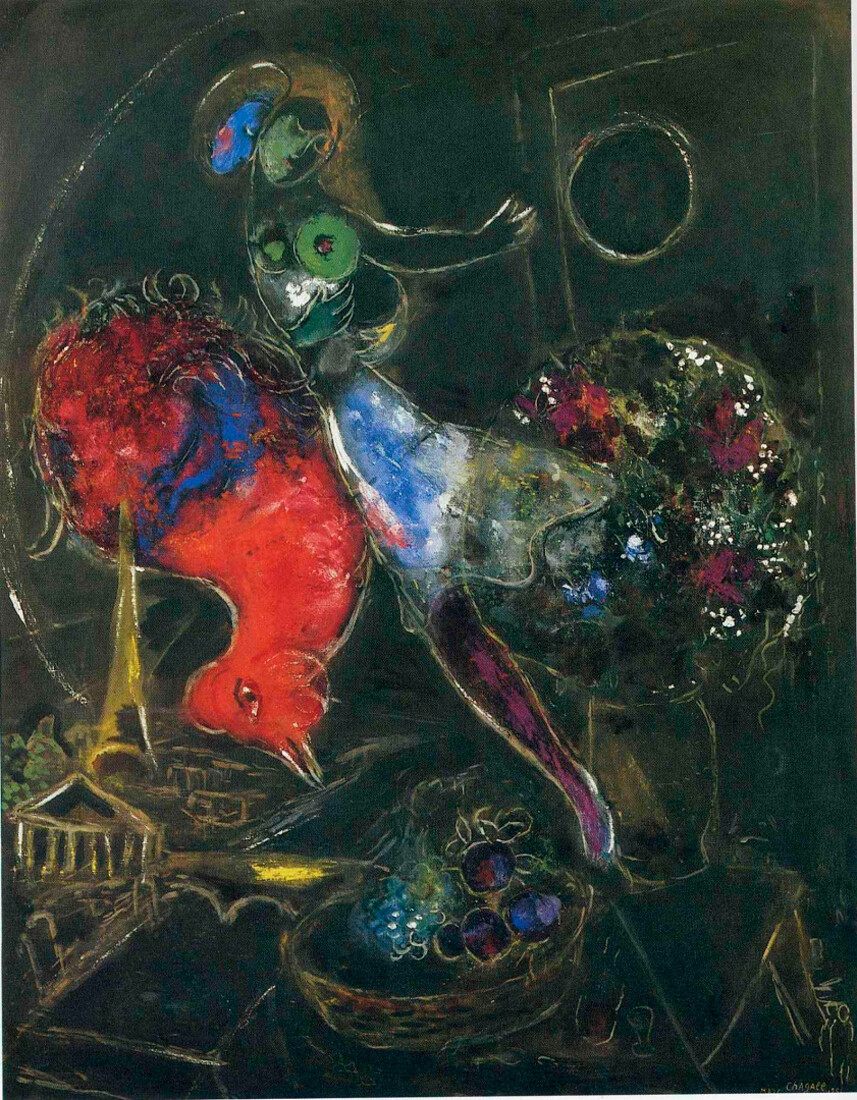
In 1948, Chagall returned to France. Books containing his illustrations - Gogol's Dead Souls and La Fontaine's Fables - were finally published, and he made progress on his graphic works for the Bible. But at the same time, there were changes in the artist's private life. Ida introduced him to Valentina Brodsky. The encounter proved fateful: They married and voyaged around the Mediterranean on their honeymoon, and then settled in Saint-Paul-de-Vence not far from Nice. But, as before, his heart was filled with homesickness for Vitebsk and an uneasy anxiety about the future.
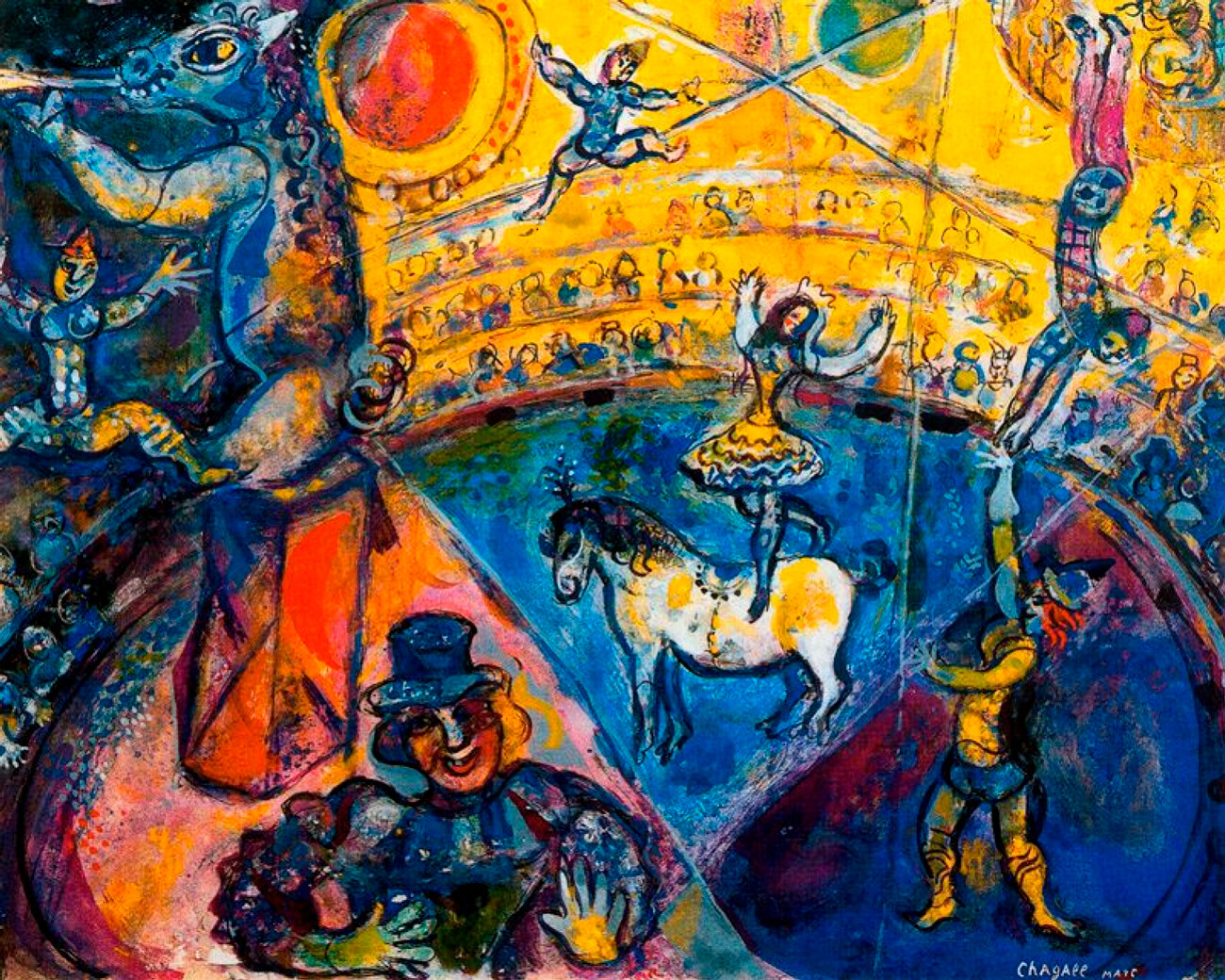
Chagall had been fascinated with the circus from childhood - ever since the moment he saw acrobats performing in Vitebsk. The artist called it the most tragic show on earth. After visiting the Winter Circus in Paris, he created a series of works on this theme and would return to the joyful, grotesque world of the circus time and again throughout his life. Two of his monumental works - one commissioned for the Watergate Theater in London and the other for the Frankfurt Opera House - were devoted to the circus and portray female riders, animals, clowns and acrobats.
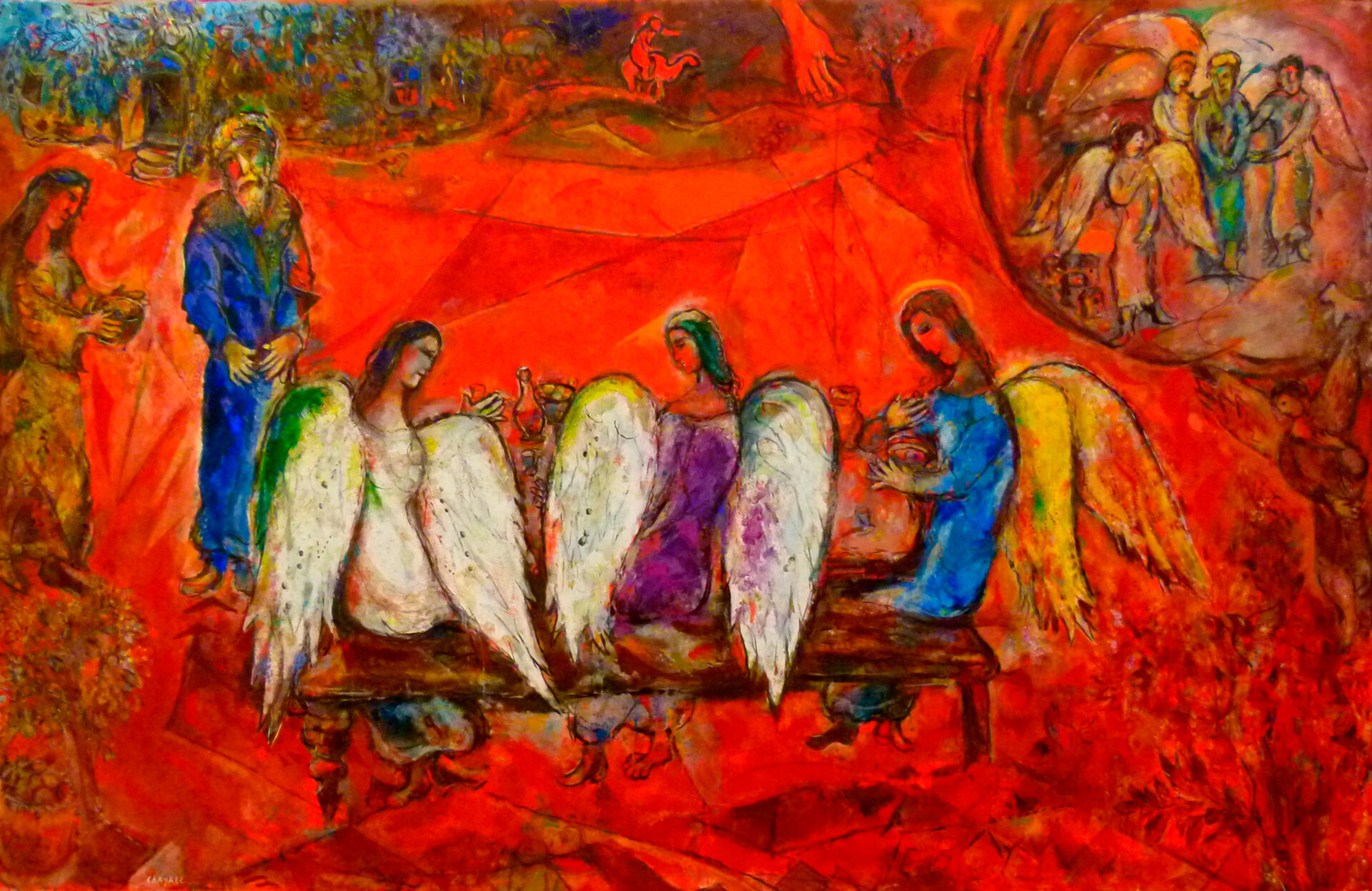
In the 1930s, Chagall traveled to the Holy Land. The trip left a strong impression and inspired him to embark on a project to illustrate the Bible, but his interest in the subject went far beyond a single publication. Stained-glass windows, tapestries, prints and paintings with Biblical themes became one of the artist's key motifs and subsequently the basis for his museum in Nice. The large painting, "Abraham and the Three Angels", is Chagall's interpretation of the Holy Trinity. One cannot help but think of the canvas as engaging in a dialogue with Andrei Rublev's famous masterpiece.
Dear readers,
Our website and social media accounts are under threat of being restricted or banned, due to the current circumstances. So, to keep up with our latest content, simply do the following:
If using any of Russia Beyond's content, partly or in full, always provide an active hyperlink to the original material.
Subscribe
to our newsletter!
Get the week's best stories straight to your inbox